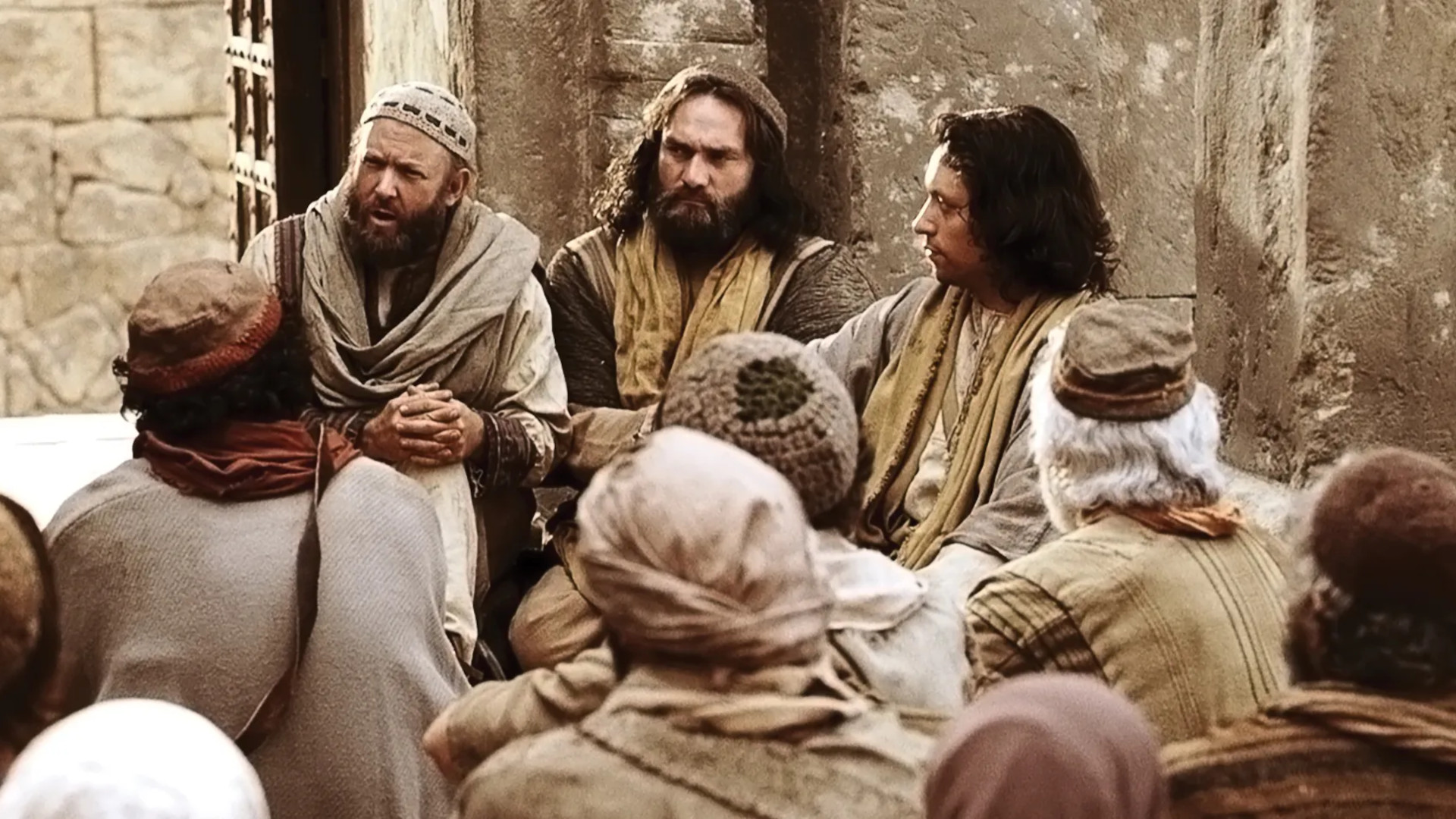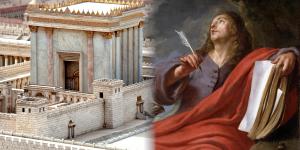You are here
How Often Do the Articles of Faith Track Sayings of Paul?

Philippians 4:8
The Know
On March 1, 1842, the Church newspaper Times and Seasons published a letter that Joseph Smith had written to a Chicago newspaper reporter named John Wentworth.1 In this letter, Joseph set forth thirteen statements of beliefs of the Restored Church of Jesus Christ that would later become known as the Articles of Faith. As people all over the world read these articles of faith today, it is inspiring to notice how much of their wording is founded upon statements taught by the apostle Paul in the New Testament. Significantly, it would appear that each is a central belief that was held by the ancient Christian Church as well as the modern restored Church. Indeed, as John Welch and John Hall have detailed, “the essence of each of the Articles of Faith can be found, often verbatim, in the writings of Paul.”2
| Articles of Faith | References in the New Testament Letters |
|---|---|
| 1 | 2 Corinthians 13:14 |
| 2 | Galatians 6:7; 1 Corinthians 15:22 |
| 3 | Colossians 1:20; Hebrews 5:9 |
| 4 | Hebrews 6:1–2 |
| 5 | 1 Timothy 4:14 |
| 6 | Ephesians 4:11 |
| 7 | 1 Corinthians 12:8–12 |
| 8 | 2 Timothy 3:16; 2 Corinthians 13:1 |
| 9 | 1 Corinthians 2:10–11 |
| 10 | Hebrews 12:22; 1 Thessalonians 2:19; 3:13 |
| 11 | Romans 2:14–16 |
| 12 | Romans 13:1–7 |
| 13 | 1 Corinthians 13:7; Philippians 4:8 |
For example, Joseph Smith said, “We believe that men will be punished for their own sins, and not for Adam’s transgression” (Articles of Faith 1:2). In the New Testament, several authors maintained this same view of salvation, each declaring that we would each be responsible for our own life choices. For example, as Paul described, “whatsoever a man soweth, that shall he also reap” (Galatians 4:6).
During the first centuries of the Christian Church, “the majority of the Greek fathers” including Origen and Clement of Alexandria, agreed with Paul and believed that death has passed on all mankind “because all had sinned” (see Romans 5:12; cf. 1 Corinthians 15:22).3 In later centuries, this doctrine was lost or marginalized as prominent theologians promulgated the notion that there was an “original sin” passed on to mankind through the fall of Adam and Eve, largely on the basis of a mistranslation of Romans 5:12 into Latin in the fourth century. Augustine of Hippo would formulate the clearest statement of “original sin” based on “mistranslation, mis-exegesis, and all.”4 Joseph Smith’s statement that we are to be punished for our own sins, then, serves as a well-needed restoration of this important doctrine.5
Another aspect of the Articles of Faith involves Priesthood authority to act in God’s name. According to Joseph Smith, “We believe that a man must be called of God, by prophecy, and by the laying on of hands by those who are in authority, to preach the Gospel and administer in the ordinances thereof” (Articles of Faith 1:5). Much of this article of faith appears to have been drawn from Paul’s first epistle to Timothy, as Paul tells Timothy that his calling “was given thee by prophecy, with the laying on of the hands of the presbytery” (1 Timothy 4:14). That is, as noted by John W. Welch, “Each element of a proper priesthood ordination is included in the steps described by both Joseph Smith and Paul.”6
This pattern would match the description of the actual ordinations of various individuals throughout the New Testament as well.7 When seven men were called to assist the Twelve Apostles, we are told that “when they had prayed, they laid their hands on them” (Acts 6:6). Similarly, Barnabas and Saul were sent on missions only after the Apostles had prayed and laid their hands upon them (see Acts 13:3). Furthermore, the author of the Epistle to the Hebrews makes it clear that “no man taketh this honour [of the priesthood] unto himself, but he that is called of God, as was Aaron” (Hebrews 5:4), making it clear that only authorized representatives of the Lord could call anyone to a Priesthood office.8
Another worthwhile comparison can be found in the final Article of Faith, which mentions the Apostle Paul by name:
We believe in being honest, true, chaste, benevolent, virtuous, and in doing good to all men; indeed, we may say that we follow the admonition of Paul—We believe all things, we hope all things, we have endured many things, and hope to be able to endure all things. If there is anything virtuous, lovely, or of good report or praiseworthy, we seek after these things.
The “admonition of Paul” mentioned by Joseph Smith is drawn from two verses of scripture authored by Paul. In 1 Corinthians 13:7, Paul declares that charity, the greatest spiritual gift that Saints should seek, “beareth all things, believeth all things, hopeth all things, endureth all things.” According to both Joseph Smith and Paul, Saints filled with this love would then be able to perform these very actions.
The last sentence of this article of faith is similarly drawn from Philippians 4:8, which states that “whatsoever things are true, whatsoever things are honest, whatsoever things are just, whatsoever things are pure, whatsoever things are lovely, whatsoever things are of good report; if there be any virtue, and if there be any praise, think on these things.” In so doing, we can enjoy the presence and gifts of the “God of peace” in our daily lives (see Philippians 4:9).
The Why
The Church of Jesus Christ of Latter-day Saints is a restoration of the Church established by Jesus Christ in ancient times. As such, it believes in the same fundamental doctrines as was taught anciently, and the bases of the Church can be found throughout the Bible. These teachings were then identified and condensed by the Prophet Joseph Smith to offer an easily accessible statement of fundamental doctrines of the faith in Jesus Christ still taught today in The Church of Jesus Christ of Latter-day Saints. As summarized by John W. Welch, “The masterful job which Joseph Smith accomplished by condensing the teachings of Paul into one single page deeply reflects his inspiration and articulate faith in the gospel. Thus we have the Articles of Faith Of the early Apostolic Church restored in the latter-day experiences of a modern prophet.”9
Moreover, although we have only considered Articles of Faith 2, 5, and 13 in this brief explanation, all of the other ten Articles of Faith also find strong counterparts in the various letters of Paul. Latter-day Saints believe in following the whole truth, not just a few favorite or convenient doctrines. Readers are encouraged to study each of the Articles of Faith and their counterparts in the New Testament to see in overview the expansive view of the Gospel of Jesus Christ that was shared by the apostle Paul and the Prophet Joseph Smith. True Christianity desires to receive the fullness of God’s infinite and eternal blessings. All that the Father has is promised to the diligent, loving, and loyal followers of Jesus Christ.10
After comparing the Articles of Faith with Paul’s epistles, it is clear that “the congruence between the teachings of Joseph Smith and Paul shows them to be of one mind and one will as apostles of Jesus Christ.”11 These brief statements of faith, as found in the New Testament and the writings of Joseph Smith, can then be seen as treasured doctrines for all Christians everywhere, both ancient and modern, both young and old, both male and female, both personal and as a body of believers in the Gospel of Jesus Christ.
Further Reading
John W. Welch and John F. Hall, “The Articles of Faith in the Letters of Paul” in Charting the New Testament (Provo, UT: Foundation for Ancient Research and Mormon Studies, 2002), chart 15–16.
John W. Welch, “Co-Authors of the Articles of Faith,” The Instructor 104, no. 11 (1969): 422–426.
- 1. “Church History,” Times and Seasons 3, no. 9 (1 March, 1842): 706–710.
- 2. John W. Welch and John F. Hall, “The Articles of Faith in the Letters of Paul” in Charting the New Testament (Provo, UT: Foundation for Ancient Research and Mormon Studies, 2002), chart 15–16.
- 3. John E. Toews, The Story of Original Sin(Cambridge, UK: James Clarke & Co., 2013), 57; emphasis in original.
- 4. Toews, Story of Original Sin, 70.
- 5. For a discussion on Latter-day Saint views of the Fall of Adam as contrasted with the doctrine of original sin, see Daniel K Judd, “The Fortunate Fall of Adam and Eve,” in No Weapon Shall Prosper: New Light on Sensitive Issues, ed. Robert L. Millet (Provo, UT: Religious Studies Center, Brigham Young University; Salt Lake City: Deseret Book, 2011), 297–328.
- 6. John W. Welch, “Co-Authors of the Articles of Faith,” The Instructor 104, no. 11 (1969): 423.
- 7. The offices found in the sixth article of faith likewise mirror the list of priesthood offices given elsewhere by Paul. For a comparison of one of these offices in the modern and ancient church, see Book of Mormon Central, “What Is an Evangelist? (Ephesians 4:11),” KnoWhy 692 (October 5, 2023).
- 8. Although Paul is often assumed to be the author of the Epistle to the Hebrews, the letter is, strictly speaking, anonymous. For a discussion on the authorship of Hebrews, see Richard D. Draper and Michael D. Rhodes, The Epistle to the Hebrews (Provo, UT: BYU Studies, 2021), 4–11.
- 9. Welch, “Co-Authors of the Articles of Faith,” 426.
- 10. Joseph Smith sought for the fullness of the gospel, and he included in these thirteen basic articles the word “all,” seven times: “all mankind may be saved” (Articles of Faith 1:3), “all that God has revealed,” “allthat He does now reveal” (Articles of Faith 1:8), “allow all men the same privilege” (Articles of Faith 1:11), “believe all things,” “hope all things,” and “endure allthings” (Articles of Faith 1:13). Seven times all is to say all to the total power.
- 11. Welch and Hall, “The Articles of Faith in the Letters of Paul,” chart 15–16.
KnoWhy Citation
Related KnoWhys
Subscribe
Get the latest updates on Book of Mormon topics and research for free





